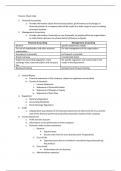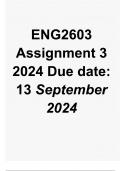College aantekeningen
MGT388 Finance for Engineers Notes
- Vak
- Instelling
Comprehensive notes on the finance part of this course. This part of the course prepares engineers for real-word scenarios where finance plays a big part in projects
[Meer zien]





